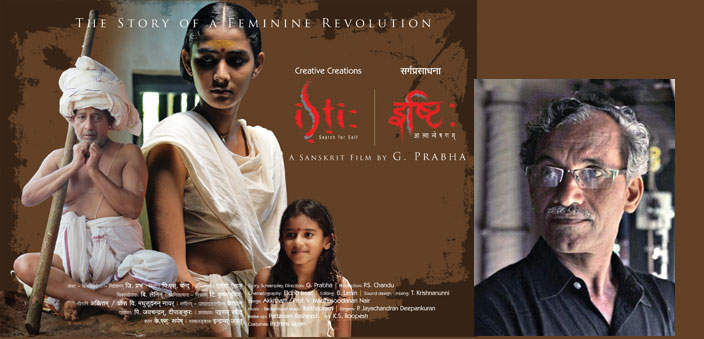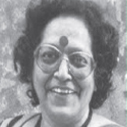Sanskrit is among the 14 original languages of the Eighth Schedule of the Indian Constitution. Yet, today, it appears to be a fading language that today’s youngsters are not keen on learning, propagating or researching. This is tragic because it is a rich language that excels in poetry, classical theatre and scholarly studies. But few of us are aware that we still have over 90 weeklies, fortnightlies and quarterlies published in Sanskrit in India, which means that it has not moved towards extinction as many may believe. To add to this rich literature is the fact that Sudhama, is a daily newspaper in Sanskrit published out of Mysore since 1970. Since the last five years, two other publications, namely, Vartman Patram and Vishwasya Vrittantam are being published from Gujarat. All India Radio (AIR) has been running a short daily news broadcast in Sanskrit since 1974, also available on on AIR’s website. The national channel Doordarshan plays a Sanskrit news broadcast on television and its website every morning.
The state of Uttarakhand in India has declared Sanskrit as its second official language. In October 2012, social activist Hemant Goswami filed a writ petition in the Punjab and Haryana High Court to declare Sanskrit a ‘minority’ language. Sanskrit is a member of the Indo-Iranian subfamily of the Indo-European family of languages. Its closest ancient relatives are the Iranian languages Avestan and Old Persian.
The looming presence of Sanskrit
Sanskrit as a language has contributed greatly both in terms of quality and quantity to Indian culture, going back to ancient history, some of which sustains to this day in the form of plays presented on the proscenium stage, rich poetry recited by Pandits and most important, to literature. In this sense, Sanskrit is a multi-layered language which, though is not the mother-tongue of Indians, is popular among historians, language experts and scholars and also, distinguished personalities across literature, music and theatre. More than 3,000 Sanskrit works have been composed since India’s independence in 1947. Much of this work has been judged of high quality, in comparison to both classical Sanskrit literature, and modern literature in other Indian languages. In 2009, Satya Vrat Shastri became the first Sanskrit author to win the Jnanpith Award, India’s highest literary award.
Sanskrit is used extensively in the Carnatic and Hindustani branches of classical music. Kirtanas, bhajans, stotras, and shlokas of Sanskrit are popular throughout India. The Samaveda uses musical notations in several of its recessions. The Sahitya Akademi has given an award for the best creative work in Sanskrit every year since 1967. Vedic and Sanskrit literature comprises the spoken or sung literature of the Vedas from the early to mid-2nd to mid-1st millennium BCE, and continues with the oral tradition of the Sanskrit epics of Iron Age India; the golden age of classical Sanskrit literature dates to Late Antiquity (roughly the 3rd to 8th centuries). Some of the most outstanding classical literatteurs have written in Sanskrit. The most prominent among them is Kalidasa, whose plays like Abhigyana Sakuntalam and Malavika-Agnimitram have been the main texts in college syllabi till a decade ago. Other famous playwrights whose works are performed even today in other Indian languages are Shudraka, Bhasa and Asvaghosa.
International projects have also borrowed generously from Sanskrit. Phillip Glass, one of the most outstanding composers of contemporary cinema, used texts from the Bhagwad Gita sung in original Sanskrit for his opera Satyagraha. A prayer from the Brihadararanyaka Upanishad was used during the closing credits of The Matrix Revolution and Madonna has included Sanskrit chants in her song Cyber-raga in the album Music, besides using Shanti/Ashtangi in Ray of Light which won a Grammy in 1998. However, whether the use of Sanskrit in these international musical texts were done authentically after understanding their meanings and placing them in the right context, or whether they were used as a marketing gimmick, remains a grey area.
Sanskrit and Indian cinema
Indian cinema has paid scant attention to Sanskrit, the ancient classical language of the country probably because marketing and release of films in Sanskrit was a commercial risk as Sanskrit was no longer popular either in educational institutions or among Indian youth. Most colleges and universities scrapped the Sanskrit Department within the faculty of languages for want of enough aspiring students. Narrow employment opportunities for students graduating in Sanskrit was another factor. One more reason is that since Sanskrit is wrongly understood to be exclusively “Hindu”, people belonging to other religious minorities are not interested in the language in the belief that it would not do them much good to learn it academically. But the computer age gave a new fillip to the language, and it is now being accepted in academia across the world as a language that opens the doors to a new world.
As of today, Indian cinema can boast of just four Indian films in Sanskrit spread over so many years of its existence. The first two Sanskrit films were Adi Shankaracharya (1983) and Bhagavad Gita (1993), both directed by G.V. Iyer. The third film screened as the inaugural film in the Indian Panorama the IFFI (International Film Festival of India) last year was Priyamasanam directed by Vinod Mankara. The first film was a biographical and historical account of Shankaracharya, while the second film was a recounting on celluloid of the famous Bhagwad Gita. The third film Priyamasanam, is about the 17th century poet-scholar Unnayi Warrier. But there has not been a single Sanskrit film that explores the social realities of Indian lives till Isti came on the scene and coloured the landscape of Sanskrit cinema forever.
The story of Isti
Dr. G. Prabha, who directed Isti which he rightly claims is the first ever Sanskrit film to have an independent social agenda through its story and its statement, says, “Today, there is a world view that aligns languages with religions, and Sanskrit has not escaped an association with Hinduism. My strong opinion is that language should not be divided by religious colour or fervour. My professor Abdul Khadar was a Muslim. In Kerala, there are many Muslim scholars of Sanskrit. A few orthodox people feel that Sanskrit is a ‘Hindu language’. It is the language of mankind. Not only Sanskrit but Urdu, Arabic, etc., – they have a message for mankind. In human beings they have made a caste system. Why also bring it into language? It is condemnable.”
Prabha was Professor of Sanskrit at Loyola College, Chennai. He made two documentary films before Isti. This film besides being beautifully made and acted in, has broken the decades-long taboo of Sanskrit films. It slowly but surely makes an indicting political statement on the power-politics of patriarchy that dominated the lives of the Namboodiri Brahmins of Kerala. Isti is about a conservative Namboodiri family in the early 1900s. The family in “Isti” is led by Ramavikraman Namboodiri, a highly regarded priest about to marry for the third time. His marriage in his 70s to the 17-year-old Sridevi is justifiable in his eyes because he needs the money from her dowry to accomplish demanding and expensive yagnas (fire rituals), when it was the norm for the head of the family to practise polygamy, and often marry women at least 40-50 years younger than him. “I have tried to flesh out the evil practices of society in the past. All this happened in spite of the fact that the community had more than its share of progressive intellectuals. But these ‘pockets’ of patriarchy where the child bride was sexually abused by the head priest who was old enough to be her grandfather sustained,” says Prabha. His older wives were silent witness to this ‘legalised’ crime in the name of religion and ‘convention’ and this included his daughter as young as the third wife. The film thus focusses on withholding literacy and education from both boys and girls in the family, the patriarch holding the key to all financial contributions that come in and forcing his brothers and his sons to depend entirely on his whims and fancies and finally, how his third wife Sridevi uses her awareness through education to fight not only for her rights, but also the rights of the other members of the family.
The film ends with the heir of the family burning his sacred thread in anger, and the old Namboodiri’s third wife walking out of the house in rebellion, after flinging away her thaali. The film has angered a group of Namboodiris who feel that the film has degraded their community. But Prabha doesn’t agree that the film is anti-Namboodiri.
Sivadasan Namboodiri, the president of Brahmanakshema Sabha in Muvattupuzha, has filed a case against CBFC (Central Board of Film Certification) for granting Isti a U-certificate, and the director for tarnishing the reputation of the Namboodiri community. What does Prabha say about this? “I cannot comment on the case as it is sub-judice.” He wishes however that it had not come to this. “I know there are those who probably think that this is publicity for the film, but as a retired professor, I never wanted cheap publicity for my work. I want the film to speak for itself, and though it missed the National Award, this omission has been vindicated by the fact that it is being invited to many festivals and has received appreciation everywhere.”
Isti means “Search for the Self.” Prabha could not have opted for a better title. Let us hope that the film will democratise the language that has been held to be exclusive to higher castes and affluent Brahmins, not accessible to people from the lower strata of society. Cinema with its power to entertain, educate and inform, can bring the social change Prabha is dreaming of. The crusade begins with Isti.


 [/column]
[/column]